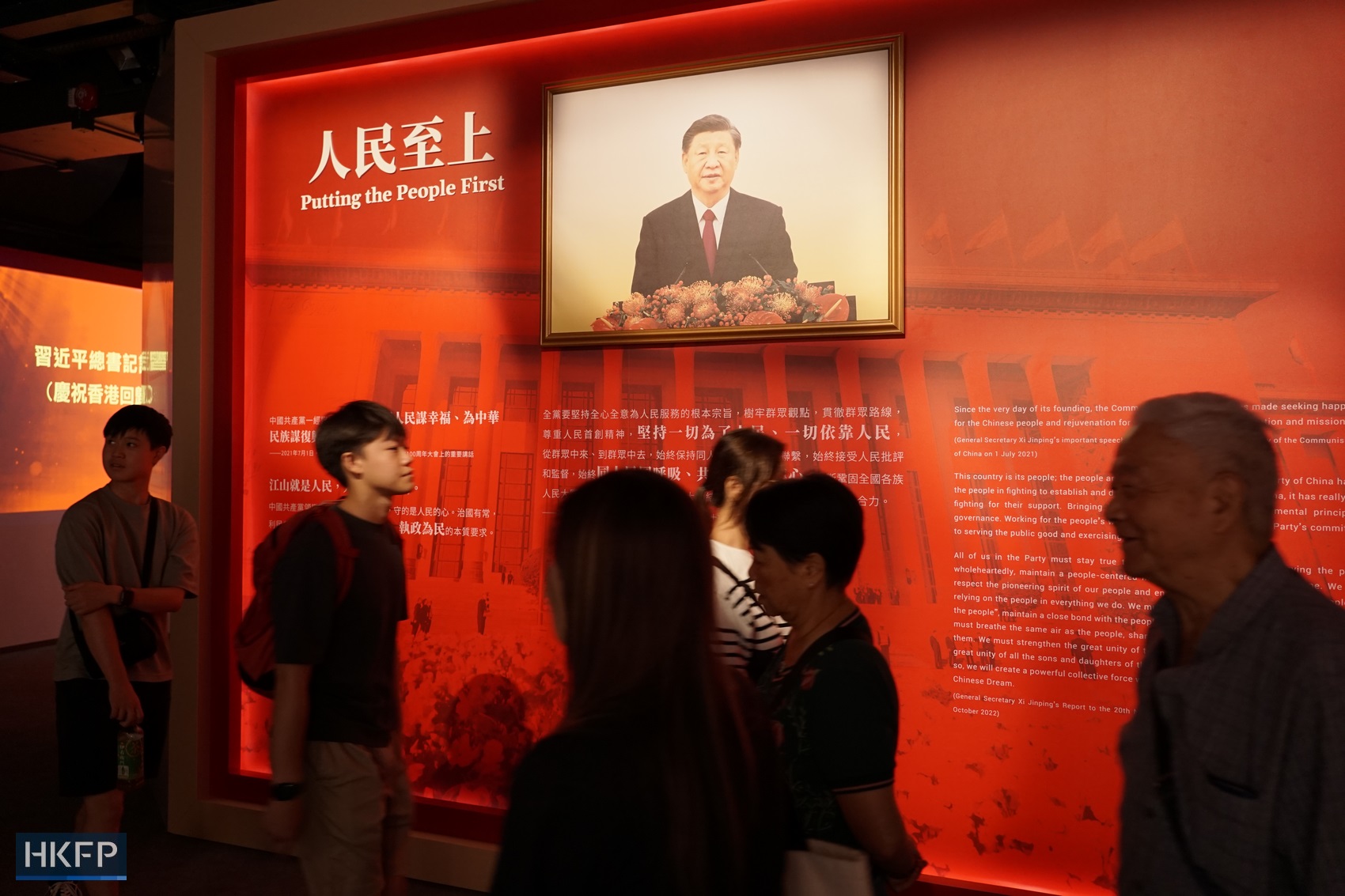Exhibit celebrates Hong Kong national security law, 'rewrites' the history of the 2019 protests
The exhibition tells “a very different story" about the unrest and the "colour" revolutions in Ukraine, Georgia, and Kyrgyzstan. Unlike the narratives in the Western media, the protests were not demands for freedom, but attacks on security and order, while Xi Jinping stressed “social stability” as a “prerequisite for building a strong and prosperous China”.
Hong Kong (AsiaNews) – An exhibition has opened to celebrate the controversial law that cracks down on civil liberties and human rights in Hong Kong, like the law imposed by Beijing, providing a "different version" of the grassroots protests of 2019, which were forcibly suppressed with over 1,300 people imprisoned.
According to those who visited the gallery dedicated to "national security", the latter offers a far different story about the unrest and the crackdown from the one relayed by Western media, countering the narrative of a "colour revolution" in defence of rights and democracy.
The National Security Exhibition Gallery, which opened last week as a permanent exhibit at the Museum of History in Tsim Sha Tsui, offers an opportunity to celebrate the tightening grip on Hong Kong and the repression of freedoms.
This policy is rooted in the controversial national security law approved in March, which follows the law Beijing imposed on the former British colony, which limits freedoms and treats certain political acts as treason and sedition.
According to the Hong Kong Free Press (HKFP), at the inauguration ceremony, Chief Executive John Lee explained that safeguarding national security is “always a work in progress” and the exhibition will help promote awareness among residents.
The first visitors were mostly from mainland China, with few from Europe and Singapore, who stumbled upon it by chance.
Eight people who spoke to HKFP said that they had planned a visit to the Museum of History and came across the exhibition.
When entering the venue, visitors have to pass under a slogan: “National Security is the bedrock of national rejuvenation. Social stability is a prerequisite for building a strong and prosperous China.”
The exhibition, which covers 1,100 square metres, is on the second floor. Divided into six different areas, it is inspired by a “holistic approach to national security,” according to an idea expressed by Chinese leader Xi Jinping in 2014.
An area in the central part of the gallery is dedicated to the 2019 Hong Kong protests and unrest and the subsequent security legislation that was enacted, including the controversial law imposed by Beijing in 2020.
Boards accompanying exhibits, like photos and police anti-riot gear, read: “The Hong Kong version of ‘colour revolution’ in 2019 plunged Hong Kong into an abyss.”
A tourist from Singapore, who only gave his surname, Kwok, said the exhibit painted a very different picture from what was reported in Western media.
For him, the exhibit was “national education for young people of Hong Kong,” arguing they had been “influenced by Britain so much” that they harboured an “anti-China sentiment.”
“National security is needed after the 2019 riots to remind people [that] Hong Kong has all along belonged to China,” he explained.
A tourist from Europe, who requested anonymity fearing reprisals, said there was “quite a large discrepancy” between the gallery and Western media. The tourist also found the gallery's reference to the 2004 Ukrainian "Orange Revolution" contrary to what he knows of the event.
In the exhibition, the Orange Revolution, as well as Kyrgyzstan's "Tulip Revolution" in 2005, and Georgia's "Rose Revolution" in 2003, were depicted as colour revolutions that lead to “to collapse of state power, causes social unrest, and throws people’s livelihood in dire straits.”
By contrast, “To me the Ukrainian revolution is not a bad thing, I wouldn’t see it as a disturbance to security,” the anonymous European tourist said.
(Photo by HKFP)
19/04/2007







.png)










